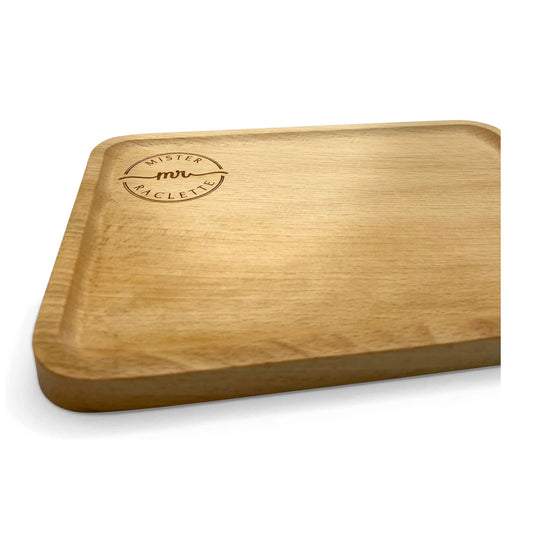L'art de racler un fromage
The art of scraping a Valais raclette cheese
Eddy Baillifard: master of the art of raclette
Valais raclette, an authentic pleasure
Raclette is much more than just a dish of melted cheese. It's a true culinary tradition in Switzerland, particularly in the Valais, where this specialty is deeply rooted in the culture.
As Valais raclette ambassador Eddy Baillifard puts it, “the art of scraping raclette cheese” requires skill and passion.
The raclette maker's advice is essential to the success of a raclette. According to Eddy Baillifard, it's important to monitor the temperature of the cheese and adjust the distance between it and the heat source.
Valais cheeses are distinguished by their unique flavors, and knowing how to scrape them properly is a real skill. Each production site, like the high mountain pastures, contributes to the cheese's exceptional character.
The taste of raclette cheese is influenced by the cows' diet and the land where they graze. On the plains, cows feed mainly on hay and fresh herbs, giving the cheese a milky, mild and creamy taste.
At the edge of the forest, the cheese takes on more woody notes, with flavors of mushroom, larch and fir, reminiscent of the surrounding countryside. At higher altitudes, on the mountain pastures, the cows graze on flowers and aromatic herbs, giving the cheese a more floral, delicate and complex flavor, typical of the mountains.
This marriage of terroir and cow feed makes each cheese unique in taste, representing the very essence of the region.
Know-how handed down from generation to generation
In Valais, raclette cheese production is based on ancestral methods. Cows graze in pastures at different altitudes, giving the cheese its distinct and unique aromas.
Climate and terroir play a key role in the creation of this delicious PDO cheese.
Raclette du Valais PDO: a guarantee of quality
When you choose a Raclette du Valais PDO, you're choosing a quality product. Each cheese is carefully inspected to guarantee an even texture and a perfect golden crust.
Choosing the right raclette cheese is essential. The cheese must have a soft paste, without holes, and a homogeneous texture. A quality cheese will guarantee a meltingly tasty raclette, especially when it comes from Valais mountain pastures such as those atHaudères.
The raclette knife: an indispensable tool
A good knife makes all the difference to a perfect raclette. Using a raclette apron makes the experience more pleasant, allowing you to handle the cheese without getting dirty. Eddy Baillifard recommends keeping a 90° angle with the knife to ensure optimum results.
Preparing raclette with flair
Raclette preparation begins with the selection of the best ingredients. A soft Valais AOP raclette cheese, firm potatoes, gherkins and a good glass of white wine are essential to enjoy this culinary experience to the full.
Preparing the raclette oven is also crucial to maintaining the ideal temperature.
A raclette workshop with Eddy Baillifard
Workshops led by Eddy Baillifard are a unique opportunity to learn the secrets of raclette. He explains with passion how to use a traditional oven or a wood fire to obtain perfectly melted Valais PDO raclette cheese.
Raclette participants also learn how to adjust the distance between the cheese and the heat source for a perfect raclette.
The taste of Valais raclette: a unique experience
The taste of Valais raclette is inimitable. Mountain herbs bring distinct flavors to each wheel of cheese. For a smooth, flavorful raclette, it's important to choose a well-ripened cheese with a soft, hole-free paste.
The terroir of the Valais PDO greatly influences the taste of the cheese. Each grazing area brings its own flavours to the cheese, from floral notes to woody touches.
This is the richness of Valais raclette, a dish that in itself represents the culinary tradition of the Valais. Whether served in a restaurant or at home, raclette is a moment of conviviality and sharing.
A convivial raclette atmosphere
Raclette is above all a time for sharing. The atmosphere around the table is convivial, with lively discussions as the cheese slowly melts. Adding a touch of pepper or other spices enhances the flavor of the cheese.
Raclette cheese and potatoes: an essential duo
Firm-fleshed potatoes are the perfect accompaniment to raclette. They absorb the melted cheese perfectly, creating a delicate marriage of flavors.
The recipe for religieuse
One of the hidden pleasures of raclette is the religieuse, a golden, crispy piece of crust. It forms naturally at the end of the raclée and is a real delight for connoisseurs.
Mastering the preparation of the religieuse is the trick of the connoisseur.
Wood-fired or electric: easy to choose?
Whether you opt for a wood fire or an electric oven, raclette remains a comfort dish. Each method has its advantages. A wood fire adds a smoky, rustic touch, while an electric oven ensures more precise temperature control.
The apron: an essential element
The apron is often overlooked, but it's essential to protect your clothes while cooking. Whether it's for an outdoor raclette or in the kitchen, it contributes to a neat and elegant preparation.
The pleasure of sharing a raclette
Sharing a raclette is above all a culinary and social pleasure. Whether with family or friends, raclette brings people together and creates lasting memories.
Haudères: a village steeped in tradition
The village ofHaudères is one of the most emblematic places for raclette production. Located in the heart of the mountains, this place preserves the traditions of raclette cheese-making.
Local producers perpetuate ancestral techniques, guaranteeing raclette cheese of exceptional quality.
Conclusion: raclette with passion
If you follow the advice of an expert like Eddy Baillifard, you'll read in this article that anyone can master the art of raclette.
Raclette from the canton of Valais is a dish that deserves to be savored with care and respect for tradition. Don't forget to choose your PDO cheese carefully and enjoy every bite.









